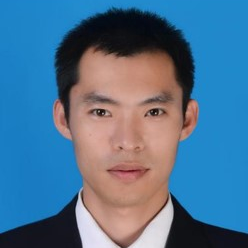Microstructure, Anti-wear Properties and Numerical Simulation of Lubricants, Volume II
A special issue of Lubricants (ISSN 2075-4442).
Deadline for manuscript submissions: closed (1 May 2024) | Viewed by 2708
Special Issue Editors
Interests: microstructure; wear and corrosions; lubricant design; surface coating technology
Special Issues, Collections and Topics in MDPI journals
Interests: alloy; tribological behavior; surface treatment
Special Issues, Collections and Topics in MDPI journals
Special Issue Information
Dear Colleagues,
Lubricants play an important role in reducing friction damage on the surface of objects. In machinery, metallurgy and other fields, many products are at risk of wear and corrosion. In order to improve the properties of products in harsh working conditions, the performance of lubricants becomes important. Therefore, we invite you to submit your original research to this Lubricants Special Issue entitled “Microstructure, Anti-wear Properties and Numerical Simulation of Lubricants, Volume II”. The topics of interest for this Special Issue include (but are not restricted to):
- Lubricant microstructure characterization;
- Design of lubricants;
- Simulation and analysis of lubricants;
- Surface coating technology;
- Novel lubricants;
- Friction and wear properties of coatings;
- Other aspects of lubricants.
Dr. Yu Liu
Dr. Yali Gao
Guest Editors
Manuscript Submission Information
Manuscripts should be submitted online at www.mdpi.com by registering and logging in to this website. Once you are registered, click here to go to the submission form. Manuscripts can be submitted until the deadline. All submissions that pass pre-check are peer-reviewed. Accepted papers will be published continuously in the journal (as soon as accepted) and will be listed together on the special issue website. Research articles, review articles as well as short communications are invited. For planned papers, a title and short abstract (about 100 words) can be sent to the Editorial Office for announcement on this website.
Submitted manuscripts should not have been published previously, nor be under consideration for publication elsewhere (except conference proceedings papers). All manuscripts are thoroughly refereed through a single-blind peer-review process. A guide for authors and other relevant information for submission of manuscripts is available on the Instructions for Authors page. Lubricants is an international peer-reviewed open access monthly journal published by MDPI.
Please visit the Instructions for Authors page before submitting a manuscript. The Article Processing Charge (APC) for publication in this open access journal is 2600 CHF (Swiss Francs). Submitted papers should be well formatted and use good English. Authors may use MDPI's English editing service prior to publication or during author revisions.
Keywords
- microstructure
- wear and corrosion
- simulation analysis
- lubricant design
- surface coating technology






